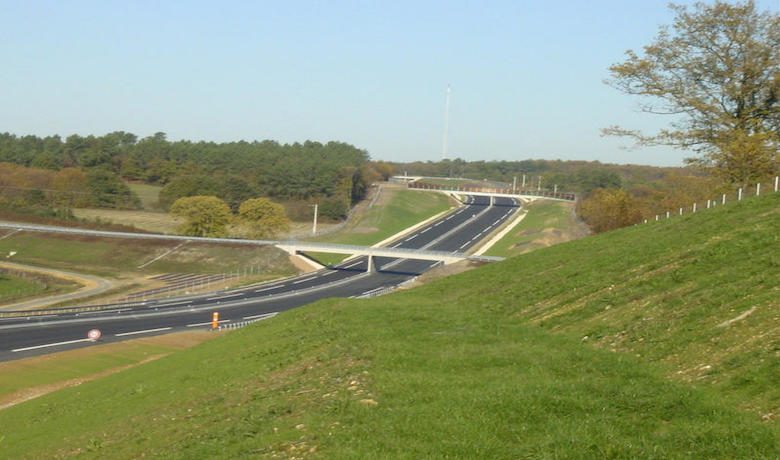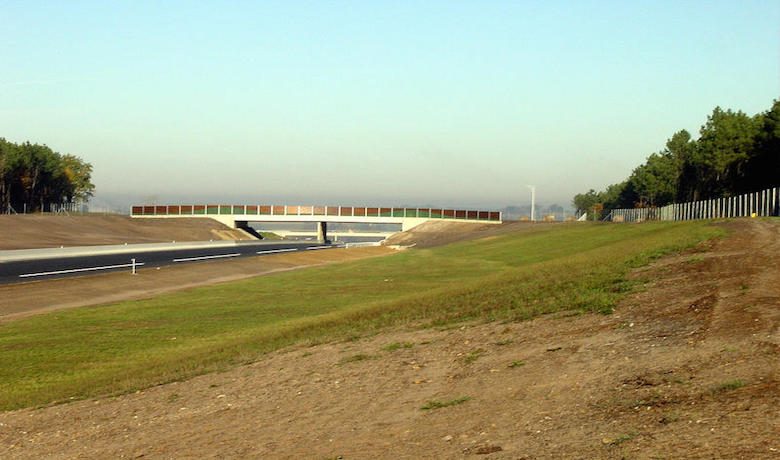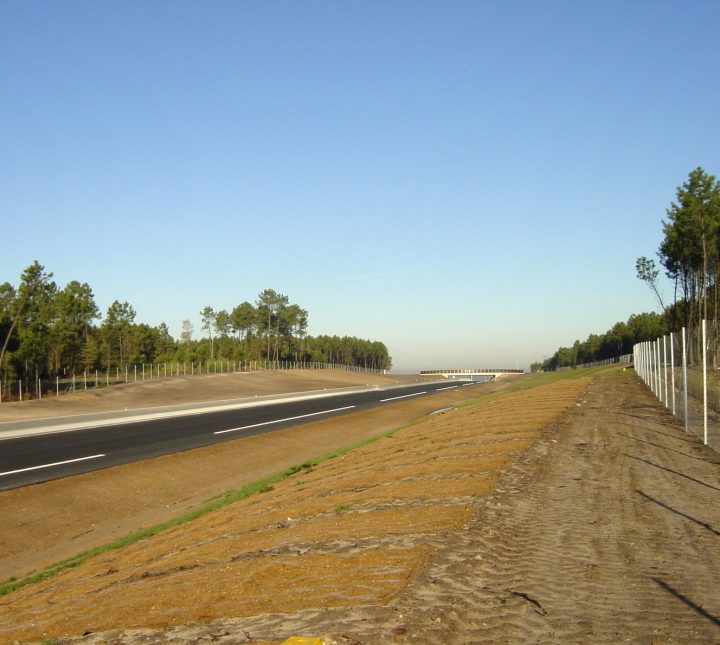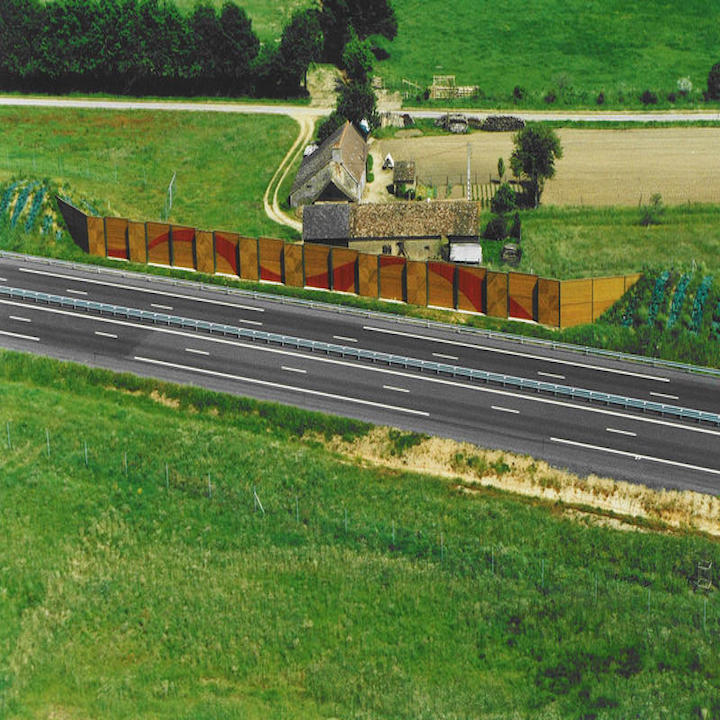TECHNICAL OVERVIEW
To respond to high performance requirements, a soil treatment technique was used in the excavation of upper parts and capping layers, both on site and at the plant to optimise the road structures. This effectively addressed the problem of the depletion of natural resources.
A first constraint emerged during the project: the Loir crossing. So, we had to build a structure to cross it.
Another difficulty also emerged: the existence of compressible areas to the north of the site. This part of the land, composed of alluvial materials (mud, clay, peat) could not support the weight of several metres of backfill without significant compacting. So, the solution chosen was to load this land gradually. The insertion of vertical drains also helped increase the consolidation of this ground by facilitating the rise of the water.
Finally, this project distinguished itself for the ecological genius of its construction. In the road network operated by Cofiroute, nearly 50 structures were built to allow the passage of deer, roe deer and boars. To limit the barrier effect and collision risks, 31 structures, including five specific ones, were designed for small wild animals (fox, weasel, hedgehog, stone marten). Noise pollution studies were conducted for this road project to find a balance between improving the road network and maintaining a good quality of life. As a result, 2,750 m of noise barriers (sound walls and screens) were installed in this section.








